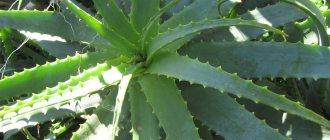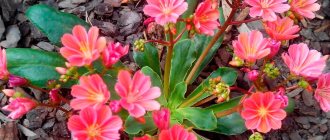Dizygoteca is a shrub with an elegant crown. It can reach almost two meters in height. It grows quite slowly. This is a plant from the Araliaceae family. In its homeland in New Caledonia and Australia, this plant grows in comfortable conditions. Growing it indoors is problematic, since all growing requirements must be met.
The structure of this houseplant is very graceful. Long stem with long carved leaves. Young leaves have a brownish-green color.
Attention – the plant and all parts are poisonous. We use protective equipment.
This is a very delicate plant, not only in appearance, but also in the conditions of its maintenance. It is demanding not only in terms of soil moisture but also in its surrounding environment. You should pay attention to lighting and temperature when growing this plant at home.
Dizygoteca Graceful is a plant with permanently decorative leaves; it can be grown as a tree or shrub. The leaves are very beautiful, they are very large.
Dizygotheca Veitch - this species has a distinctive feature and the difference between other species is only in the shape of the leaf. This dizygotheca has them with a wavy edge.
Dizygotheca Elegantissima is very similar to its other species.
If at least one condition for its comfortable cultivation is violated, the leaves begin to fall and then the trunk begins to dry out.
It can be grown by experienced flower growers.
What does dizygoteca look like?
This plant belongs to the category of evergreen shrubs and trees of the Araliaceae family. It’s beautiful enough that photos of dizygotheca always turn out successful and aesthetically pleasing.
In appearance, it is a bit reminiscent of a palm tree - the smooth trunk is decorated with a spreading crown with a diameter sometimes reaching 4 meters. The height of dizygotheca when growing in natural climatic conditions is from 6 to 8 meters, but when grown indoors it is limited to two meters. As its age increases, the straight trunk of the plant begins to harden and become covered with denser bark.
The leaves of Dizygotheca are very beautiful - large and palmate, separated into 7-10 lobes. The length of one lobe can be from 10 to 30 centimeters, the edges are jagged, the lobes are united by a petiole, up to 40 cm long.
The foliage can be painted in various dark colors, such as dark red, green, and almost black shades. On the dark background of the leaf, lighter veins are visible, the same color as the petioles.
How does dizygoteca bloom? Very modest, its inflorescences are umbrella-type, very small, and therefore are not always valued as a decorative decoration.
Reproduction
It is quite difficult to propagate dizygoteca under indoor conditions. Young plants can be obtained by cuttings and seeds.
The method of propagation by apical cuttings is considered simpler. But we must be prepared that not all seedlings will take root. This is done as follows:
- cuttings 8-10 cm long are cut from the tops of the shoots;
- the cut is made obliquely under the node with a sharp and disinfected instrument (blade, knife, etc.);
- All leaves are removed from the lower third of the length of the branches;
- within a few hours, the planting material is slightly dried;
- the cut site is treated with phytohormones (root formation stimulants);
- the planting container is filled with a light soil mixture of sand and peat;
- then the prepared cuttings are planted, lightly pressing the soil around each of them;
- cover with a glass jar or plastic wrap to create a mini-greenhouse and place in a bright and warm place;
- containers with seedlings must be provided with bottom heating, the substrate temperature must constantly be within +22…+25°C;
- periodically the greenhouse needs to be ventilated and the soil moistened as necessary;
- after the first shoots appear, the ventilation time is gradually increased so that the young plants adapt to the room climate;
- Well-rooted and strong bushes are planted in separate pots.
Growing from seeds is a much more difficult, troublesome and ineffective method. It is used only by experienced gardeners. The germination rate of planting material is not very high.
Propagation by seeds is carried out using the following technology:
- at the beginning of winter (January, February), the seeds are soaked in warm water, adding Zircon or Epin;
- a sand-peat mixture is prepared in a bowl (it is advisable to disinfect it in advance);
- the seeds are planted to a depth equal to approximately 2 diameters of the planting material;
- carefully moisten with a spray bottle;
- cover with glass and provide diffused light;
- placed in a warm place where the optimal temperature should be maintained within +20…+22°C;
- Organizing heating from below will help stimulate germination;
- periodically ventilate and moisten;
- the first shoots will appear in 15-30 days;
- shoots sprout after the appearance of 3-4 leaves;
- within 3-4 months the temperature should be around +18…+20°C;
- when the seedlings grow up, they are planted in individual containers.
How to properly care
Despite the fact that the plant comes from the tropics, it still prefers to grow in the shade of other trees that are taller than itself. For good growth, the growing conditions in the room must match those in nature.
Caring for dizygoteca at home involves strict adherence to criteria such as proper light, watering, humidity, etc.
Transfer
Dizygoteca prefers loose soil that allows air and moisture to pass through well. Ready-made soil for decorative foliage plants with the addition of vermiculite and crushed charcoal to protect against root rot is suitable.
You can also prepare a mixture of equal parts:
- peat;
- coarse sand;
- humus;
- turf land;
- leafy soil.
The plant is replanted in the spring as needed, when its roots begin to appear from the drainage hole. The new pot should be one and a half times larger than the previous one.
Lighting
The most optimal solution would be to place the dizygoteca tree on the eastern side of the room. There is enough light and no hot afternoon sun.
It is important to maintain consistency in the position of the plant relative to the light source: you cannot turn or move it, as this may cause the tree to shed its leaves.
In winter, it is important to provide 10-12 hours of daylight. For this, you can use phytolamps or fluorescent lamps.
Air temperature and ventilation
In the room where the dizygotheca flower will grow, it is necessary to maintain the air temperature no lower than 18 degrees Celsius (otherwise the plant will shed its leaves) and no higher than 29 degrees (otherwise the plant will “burn” from the heat).
This plant loves fresh air, but despite this, it is afraid of drafts and sudden changes in temperature. In this regard, when ventilating a room in the cold season, it is important to ensure that the flower does not fall under direct air currents.
Main types
Within the group, several varieties of dizygotheca can be distinguished:
- elegant. The low tree reaches 2 m in height. It is also distinguished by 30 cm leaves on long petioles with serrated leaf blades.
Within this species, there are 3 varieties: desigoteca Bianca, Castor, Gemini;
- Veitch. This variety is very similar to the previous one. The main difference is wider, but at the same time short oval leaves;
- Kerkhova. Dizygoteca has all the features of Veichi, but its leaves have a different shape and are colored a little lighter;
- Gracillima. The lowest among relatives; The edges of the wide leaves are wavy, the color is pale.
Did you know? Dizygotheca can hardly be called a popular plant, but it has more famous relatives (for example, ginseng).
Watering
This plant needs balanced watering - in hot and warm periods, abundant and regular watering is important, in the cold season it needs to be watered more moderately. If there is a lack of moisture in dizygotheca, the leaves begin to dry out; if there is too much moisture, the soil may become acidic, as a result of which fungus and other diseases develop.
To determine whether a plant needs watering, you can touch the top layer of soil. If it's dry, then it's time to water it. By the way, for this it is better to use soft water that has settled for several days at room temperature.
Crown formation
To form an aesthetic crown in dizygotheca, it must be properly trimmed. If this is not done, as the plant grows, it will shed its lower leaves (which is the norm here), and eventually a straight and bare trunk will grow with leaves at the top.
Pinching the tops won't help here. To do this, the plant is radically pruned in March. The best pruning option is when you leave a very short stump of about 15 cm. New buds will begin to form and new branches will appear at the base of the trunk.
Plant care
Lighting
The eastern window is the best place for dizygoteka - there is enough light, and the rays of the sun are not so scorching. On the north window there will be little light for growth. If, however, the bush is on the south side, then it needs to be shaded from the rays of the sun.
The location of the plant must be permanent - no rotation or change of location is allowed. All this will lead to shedding of leaves. In winter and on cloudy days, it is necessary to use lamps so that the tree has 12 hours of daylight. It will quickly get used to artificial light.
Temperature
For dizygotheca, the appropriate temperature is 20-25 degrees. If the temperature in the house drops to 15 degrees, the plant will die. Dizigotheca does not like drafts, but it needs fresh air. It is difficult to take such a bush outside due to its size, so the room must be ventilated as often as possible.
Air humidity
The plant is tropical and needs high humidity. Therefore, dizygoteca should be sprayed 2-3 times a day. In winter, spraying must be done more often, otherwise the tips of the leaves will begin to dry. To increase air humidity in winter, bowls with pebbles or expanded clay filled with water can be placed next to the tree. You can put moss on top of the soil, this will give the plant additional moisture.
Watering
Watering plays an important role in the life of a tropical beauty. In spring and summer, it is watered more often; in winter, watering is reduced. If the leaves dry out, watering should be increased slightly. It is important not to overwater the plant, otherwise the roots will rot and diseases will begin to develop. This will lead to death. Use soft water for irrigation; rainwater is an ideal option.
Priming
For good growth of dizygoteca, a ready-made mixture for dracaenas is ideal. You can prepare the soil yourself by mixing sand, humus and soil.
Feeding
During the period of intensive growth, the plant is fed twice a month. Complex fertilizers are used as fertilizing. They are applied at the root. Dizygoteca loves spraying, so you can prepare a solution by mixing water and fertilizer in half. A resident of the tropics will enjoy such a nourishing shower.
Crown trimming
Plant pruning plays a big role in care. If it is not trimmed, the lower leaves will fall off and the trunk will eventually become bare and elongated. In order for the crown to be beautiful and the growth of the plant to be restrained, the tree is cut off every spring and only a stump 15 centimeters high is left.
Dizygotheca transplant
After purchase, the plant needs to be replanted, since in stores it grows in peat, which does not provide the necessary nutrition. When transplanting, the transshipment method is used. Further transplants are carried out every spring.
Young bushes need to increase the size of the pot, but not by much; the roots develop better in close quarters. For adult plants, there is no need to change the pot; just update the soil.
To make the dizygoteca more decorative, you can plant 3-4 plants in one container.
Diseases and pests
The plant is quite resistant to diseases, but sometimes pests such as aphids, mealybugs, whiteflies, and spider mites appear on it.
For preventative purposes, you can periodically treat the leaves with a cotton pad soaked in a weak soap solution. And once pests are identified, the plant needs to be treated with chamomile infusion. If such an infusion does not cope with the problem, then insecticides can be used (but with caution).
Types of culture
There are two well-known and popular types of culture:
- Dizygotheca is elegant. In appearance, the plant resembles a tree. It has the same single upright trunk, but with slight branching. The leaves are oblong with toothed edges. They grow on long stems. The plates are green in color. Each stalk contains from four to eleven such plates. They look in different directions. The buds are located in the upper part, but they do not give much beauty to the crop.
- Dizygoteca vecha. In terms of external characteristics, the plant is practically no different from the species described above. Dizygotheca has leaves that are green all year round. The edges are a bit soft compared to the elegant one.
READ MORE: Blue clematis 30 photos description of blue bush and double varieties of clematis Blue Puppy and Blue Rain small-flowered varieties
In stores you can also buy the most elegant dizygoteca.











